How a former ski hill in southern Alberta has become an important key to climate study
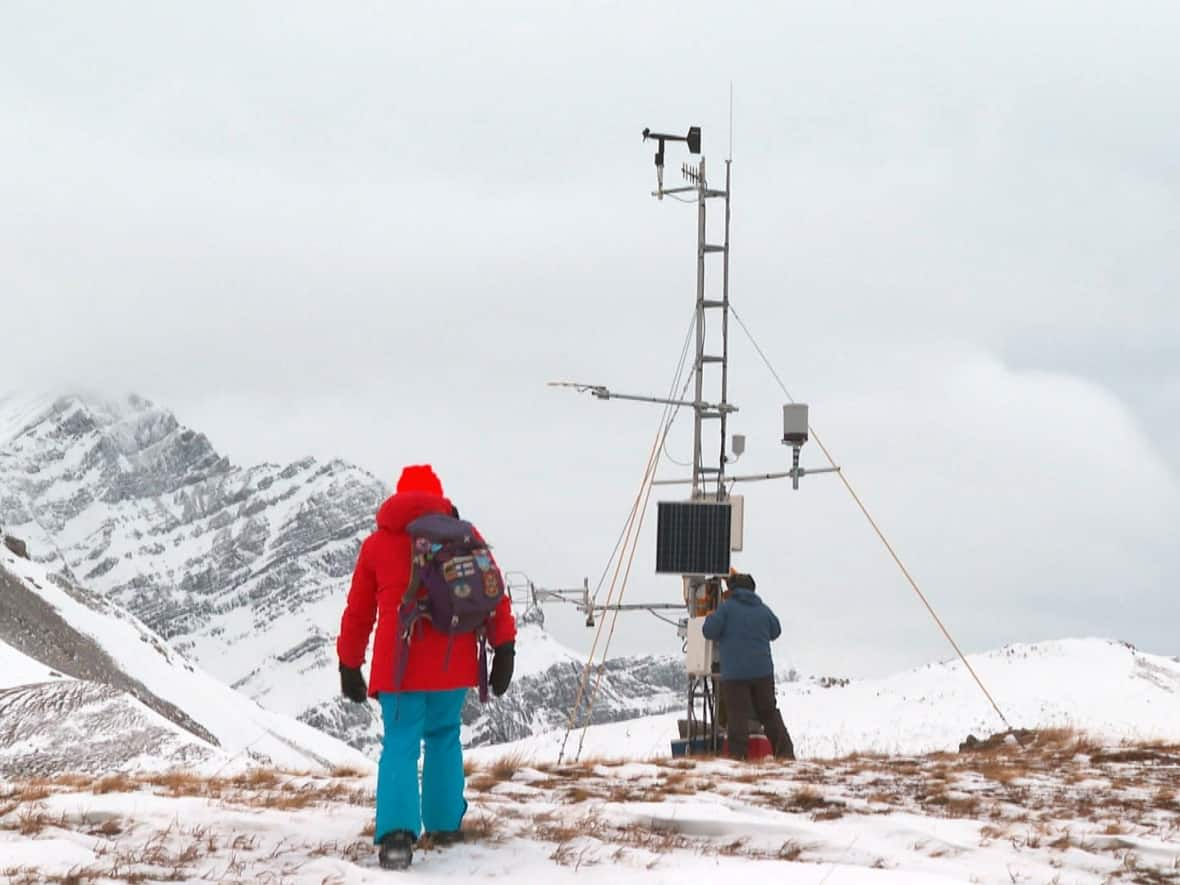
Virtually every snowflake that falls on Fortress Mountain in the Kananaskis region is recorded and watched.
"We're in a time when we get extreme weather and a changing climate," said John Pomeroy, director of the University of Saskatchewan's Centre for Hydrology. "We try to follow every drop of water, every flake of snow, and see where it's going."
The Centre for Hydrology's Coldwater laboratory is made up of stations with instruments placed on the ridges, glaciers, valleys, and creeks in the Alberta Rockies.
Data collected, and numbers crunched, are forming new and more reliable climate prediction models for flood, drought, and water supply forecasting. Nowadays they are based on physics instead of historic observations.
This information is becoming increasingly important, Pomeroy said, as a changing climate changes the norm in the mountains.
The formulas they develop are complex, but have proven to be robust, he said.
"If you have a model that's based on physics, you can throw at it a weather pattern or a climatic condition that we've never seen and the laws of physics still hold," Pomeroy said.
Pomeroy checks in on the lab's stations as much as some of us scroll through Twitter. In the morning, the first thing he wants to know is what's happening at Bonsai or Fortress Ledge or Canadian Ridge.
The bones of this former ski hill, Pomeroy said, make the perfect partnership for climate research. Key staff still work on Fortress, taking care of avalanche control and maintaining the road leading to the old day lodge.
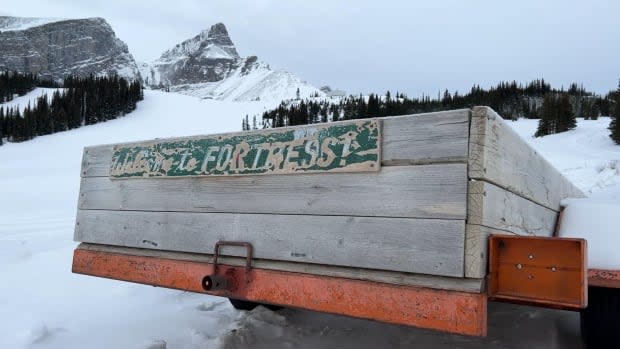
Without those two things, Pomeroy said researchers wouldn't be able to make it up to their stations that host various experiments.
Taking care of these stations is hard work done by people like research technician Kieran Lehan, who says his main role is managing 35 hydrometric stations — not just on Fortress Mountain, but in other parts of Kananaskis, and the Icefields Parkway.
"Taking care of all of these little robot babies, all of the sensors and the data loggers," Lehan said.
It's often a tough job of figuring out how to keep stations and sensors running through some rugged and freezing temperatures.
"When you have this many stations and this many sensors …things just go wrong, especially in the winter," Lehan said. "I have no shortage of work."
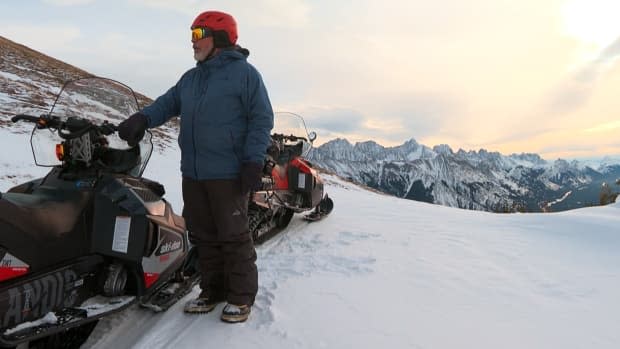
A day of checking out all of the stations on Fortress means hopping on a Skidoo with a sled, a bagged lunch from home, and some snowshoes in case of deep snow.
There's a lot of ground to cover, and often it's a windy and cold job. If temperatures dip low enough, batteries at some of the stations need to be swapped out. And that's a heavy lift: a camping cooler full of car batteries needs to be dragged to the site and buried in deep snow as a backup if wind and solar power fail.
Data isn't just collected from the ground.
Madison Harasyn, who is a research technician, pilots drones equipped with various sensors, including a Light Detection and Ranging (LiDAR) sensor.
"We do take snow surveys over different locations in the Fortress Basin just to verify snow depth and density in those areas," Harasyn said.
"It's basically like taking a million samples of snow depth over the fortress basin in one day versus, you know, going and doing it yourself and then disrupting the snow as well while physically measuring it."
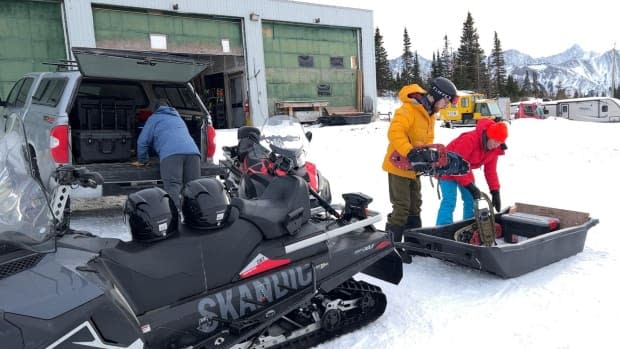
At every station, Pomeroy has a laundry list of ongoing experiments and research tied to the equipment you see around you, and discoveries researchers with the Centre for Hydrology and experts from other institutions have made here.
"It's been a really good collaboration site," he said.
Discoveries like how the tree line in Kananaskis is creeping up the Alpine. Trees hold snow in place but the snow that shrouds the tops of trees and is caught in branches often evaporates into the atmosphere — never making it down the streams as meltwater.
And to monitor that you'll find a tree in the forest that's unlike others. It has been chopped from its roots and suspended in the air by some metal scaffolding, a pulley, and some wire.
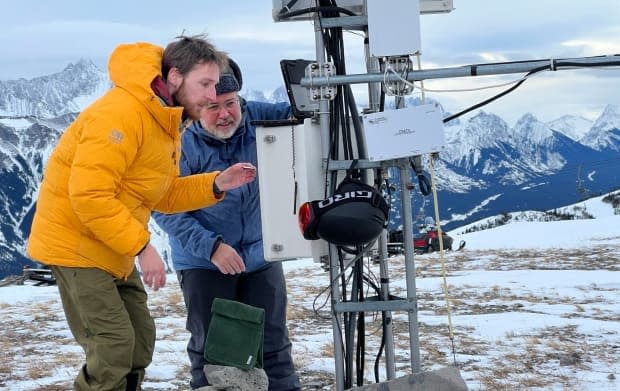
Lehan climbed up the system last fall by climbing the tower with a harness on. Pointing cameras in various directions so that the site can be watched remotely — he said this helps in case there's something funny going on with the data.
The tree is weighted at 15-minute intervals and nearby horse watering troughs catch the snow that's blown from tree tops, incorporating that measurement as well.
"The amount that unloads the amount of water vapour that leaves this area by evaporation and then the accumulation of snow on the ground," Pomeroy said. "It's kind of a snowy ecosystem up here."
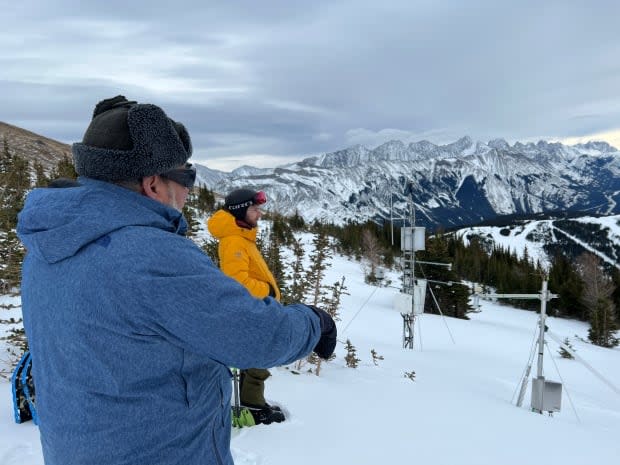
He said they've learned how avalanches transport snow into lower elevations where nice, slow-melting reservoirs are created.
One lake he's sure to point out, a water basin is empty in winter — in the spring, he said, it is full of water that isn't fed by a stream, but from groundwater stored inside of the mountain.
All of these discoveries mean more understanding, and more data to plug into the complex formulas the Coldwater lab develops to create forecasting models and shares openly with governments here in Canada and across the world.
With new technology, like supercomputers, he said scientists are now able to manage complex calculations quickly.
"There will be more floods in the future and hopefully we'll be able to predict them better than we have in the past and that's that that's my hope," Pomeroy said.


